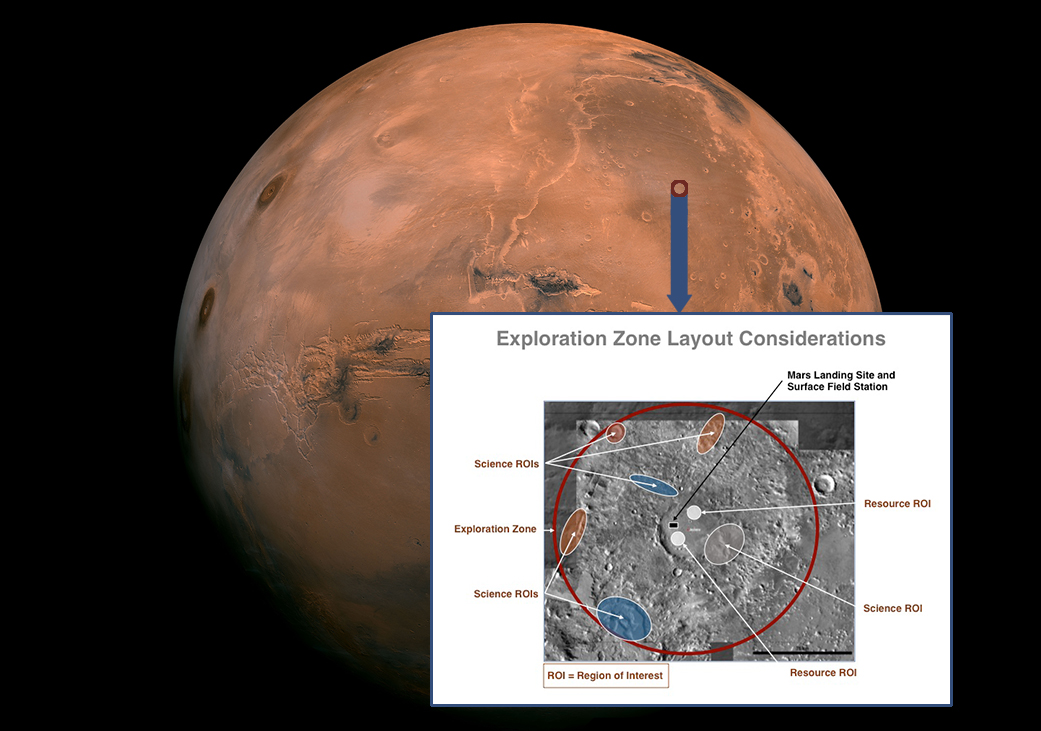
NASA has already begun trying to figure out where its first Mars astronauts should touch down, about two decades before the pioneers are scheduled to launch toward the Red Planet.
The space agency will hold a workshop in Houston this October to kick off serious discussions about possible landing sites for NASA's first manned Mars mission, which the agency aims to launch by the mid- to late 2030s.
At the four-day meeting, researchers will propose roughly 62-mile-wide (100 kilometers) "exploration zones" that they believe would be scientifically interesting and possess enough resources, such as subsurface water ice, to support human explorers.
"This is going to be a hot debate," Jim Green, head of NASA's Planetary Science Division, told reporters during a teleconference today (June 25). The October meeting, he added, "will start exactly the conversation we need to be able to architect what a station on Mars would look like, and how [it] would operate."
Over the next few years, NASA plans to study the most promising exploration zones in depth using the agency's Mars Odyssey spacecraft and Mars Reconnaissance Orbiter (MRO), which began circling the Red Planet in 2001 and 2006, respectively.
The two venerable orbiters won't last forever, so it's important to get the ball rolling on the site-selection process now, Green said.
"Humans are going to need high-resolution [imagery] over their whole exploration zone," Green said, noting that MRO has captured high-res images of just 3 percent of the Martian surface to date. "Therefore, we need to know where they're going. It's really that simple."
Get the Space.com Newsletter
Breaking space news, the latest updates on rocket launches, skywatching events and more!
Detailed information about the potential exploration zones' mineralogy will also be crucial to mission planners, providing clues about what resources the sites may harbor, Green added.
"This, I think, is an enormous step in defining how we're going to operate on Mars, and what do we need to take with us, because we will have a much better idea of what's there," he said.
The first Landing Site/Exploration Zone Workshop for Human Missions to the Surface of Mars will take place at the Lunar and Planetary Institute in Houston from Oct. 27 through Oct. 30.
Follow Mike Wall on Twitter @michaeldwall and Google+. Follow us @Spacedotcom, Facebook or Google+. Originally published on Space.com.
Join our Space Forums to keep talking space on the latest missions, night sky and more! And if you have a news tip, correction or comment, let us know at: community@space.com.

Michael Wall is a Senior Space Writer with Space.com and joined the team in 2010. He primarily covers exoplanets, spaceflight and military space, but has been known to dabble in the space art beat. His book about the search for alien life, "Out There," was published on Nov. 13, 2018. Before becoming a science writer, Michael worked as a herpetologist and wildlife biologist. He has a Ph.D. in evolutionary biology from the University of Sydney, Australia, a bachelor's degree from the University of Arizona, and a graduate certificate in science writing from the University of California, Santa Cruz. To find out what his latest project is, you can follow Michael on Twitter.









